Exhibition Introductions / catalogue essay / biographical details // / for more on Axel Poignant
| |
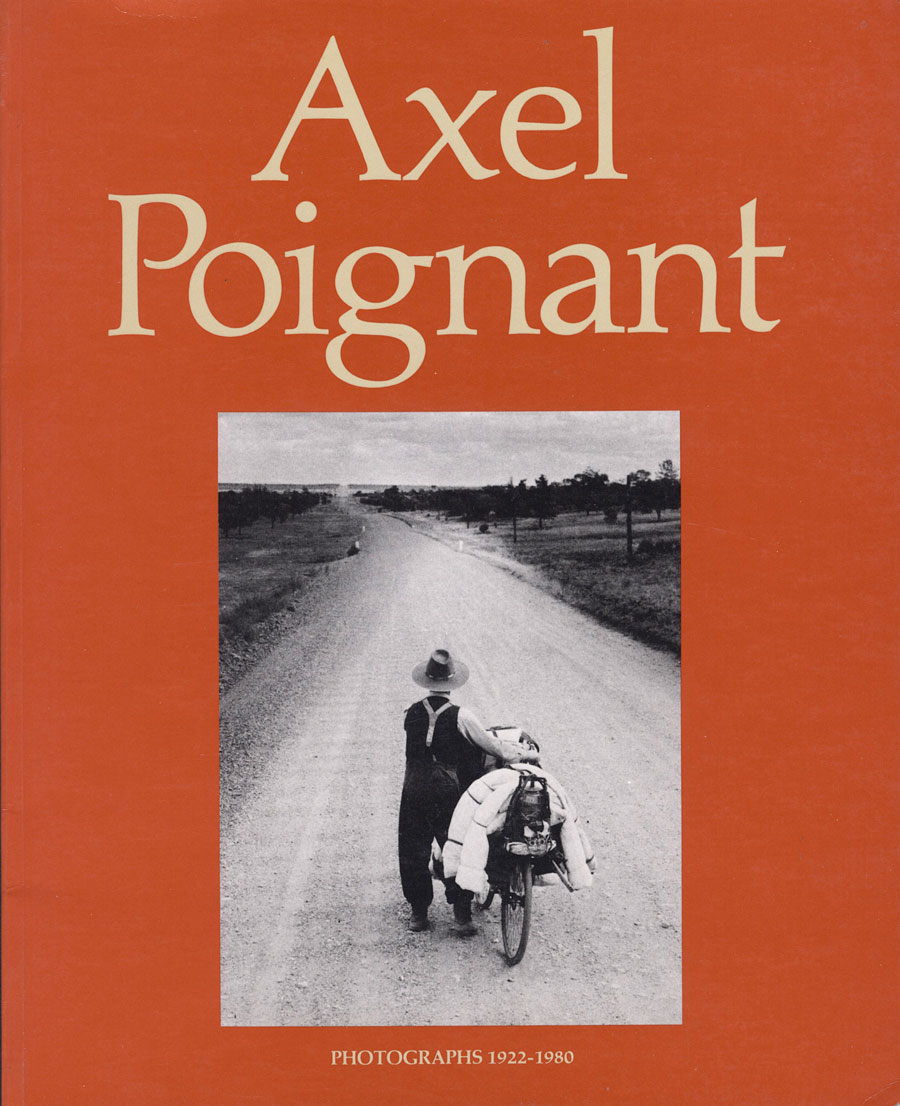 |
An online version of the catalogue
for theretrospective exhibition of the work of Axel Poignant
The Art Gallery of New South Wales, Sydney 1982
Cover image:
Swagman on the road to Wilcannia, 1953/4 (cat 74) |
AGNSW 1982 exhibition - selection of images plus checklist
About the 1982 exhibition
The majority of prints for this exhibition were made by the photographer in London in 1981. The exceptions are: nos 29, 33, 36, 41, 45, 46, 58, 66, 67, 69, 73, and 74 which were previously printed and are in the permanent collection of the Art Gallery of New South Wales; nos 15, 25, and 24 which are prints made close to the date of the negative and are described as vintage prints: nos 27, 84,104, 107,108-112 which are colour prints from transparencies made by the Colour Centre, London Nos 32, 62,113 are colour prints made by Colorpro, Sydney: no 31 was printed in Sydney by Roger Scott from negative held by the Australian Information Service, Canberra.
Most of the photographs are black and white prints ie. silver gelatin emulsions. Colour works ranging from 1942-80 are: nos 27, 32, 62, 84,104,107,108-113.
Some captions have been organised for convenience, and to avoid repetition, by the use of headings and sub-headings.
Titles and notes on the images have been provided by the photographer. For space reasons specific inscriptions on each print eg. signature, studio stamp, titles, dates and notes have not been transcribed. However, all prints have been signed and captioned by the photographer.
The usual inscription is for the signature and date of the print to occur on the lower right of the sheet under the image, and for the title and date of the negative to be written on either the lower left of the sheet or on the back of the print. The studio stamp occurs on the back of all prints.
The date beside the title in the captions is that of the year in which the negative was made. A date before the dimensions on the second line of captions indicates a vintage print. Dimensions, of the image area only, are given in centimetres, height precedes width.
The sacred content of any Aboriginal subjects was indicated by the Rev. Lazarus Lamilami in 1952. Lamilami was Poignant's guide on the Liverpool River expedition.
Any restrictions originally placed on photographs taken by Poignant in Arnhem Land in 1952 were reviewed and confirmed by Rev. Lazarus Lamilami in 1975, and are indicated on a set of references prints lodged in the National Library of Australia, Canberra.
Names of Aborigines have not been given in the titles to avoid any inadvertant naming taboos.
As separate indexes to Poignant's exhibitions, publications and bibliographic references have been provided, the caption information has been abbreviated eg. Axel Poignant — Hal Missingham, 1941 #3 indicates the Axel Poignant — Hal Missingham Exhibition of Photographs, Perth 1941 cat no 3. If full details of exhibitions or publications are not included in the caption they are to be found in the indexes.
Publication references abbreviated in captions, not listed in indexes.
1947 O. Ziegler (ed), Australian Photography 194-7, Sydney, Ziegler Gotham publications.
Publication of selected entries from the Newcastle and Hunter Valley 150th Anniversary exhibition.
1951 Colin Simpson, Adam in Ochre, Sydney, Angus & Robertson, p 38, 74-5, 142, 158, 159, 175.
1957 A Ziegler (ed), Australian Photography 1957, Sydney, Oswald Ziegler publications.
1957 FD McCarthy, Australia's Aborigines: Their Life and Culture, Melbourne, Colourgravure publications
The Herald and Weekly Times; Griffin Press, Adelaide.
Selection of photographs from the 1982 exhibition
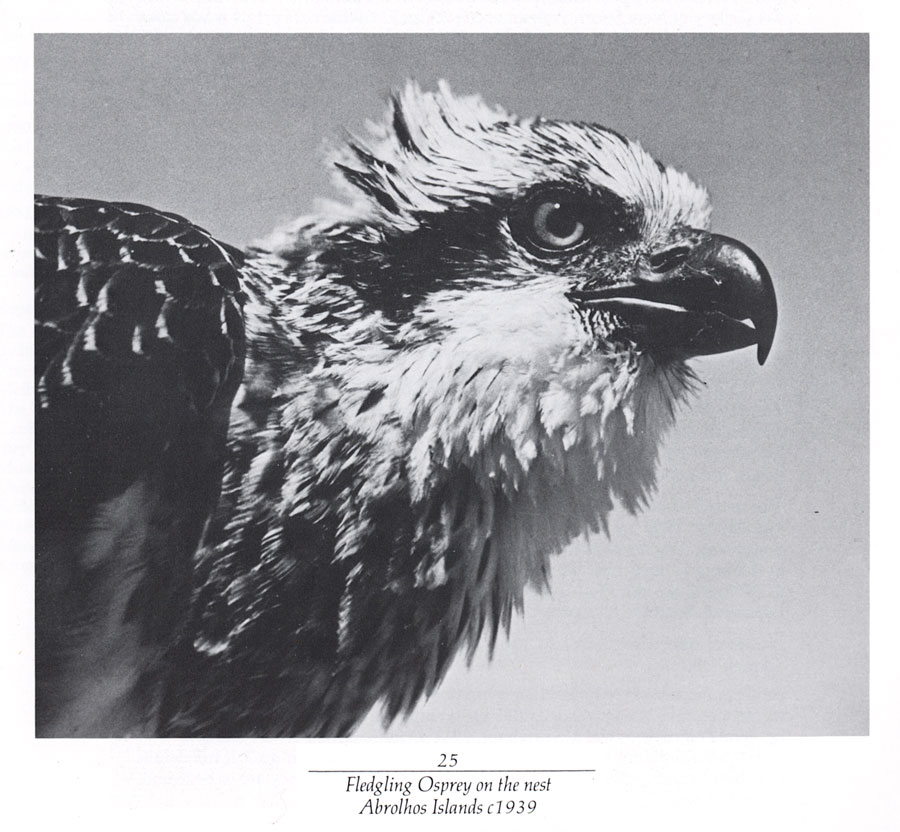
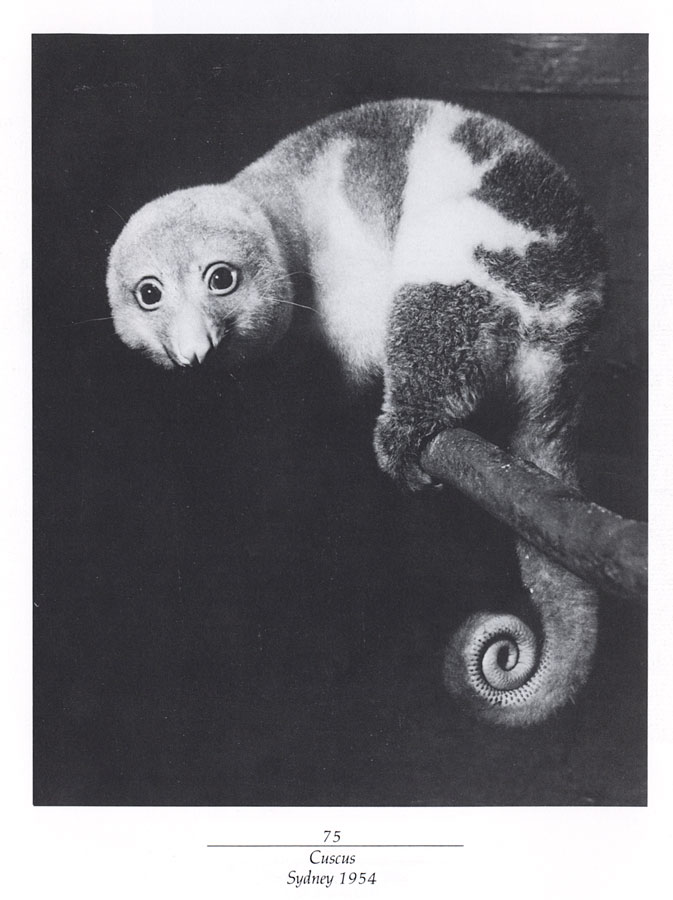
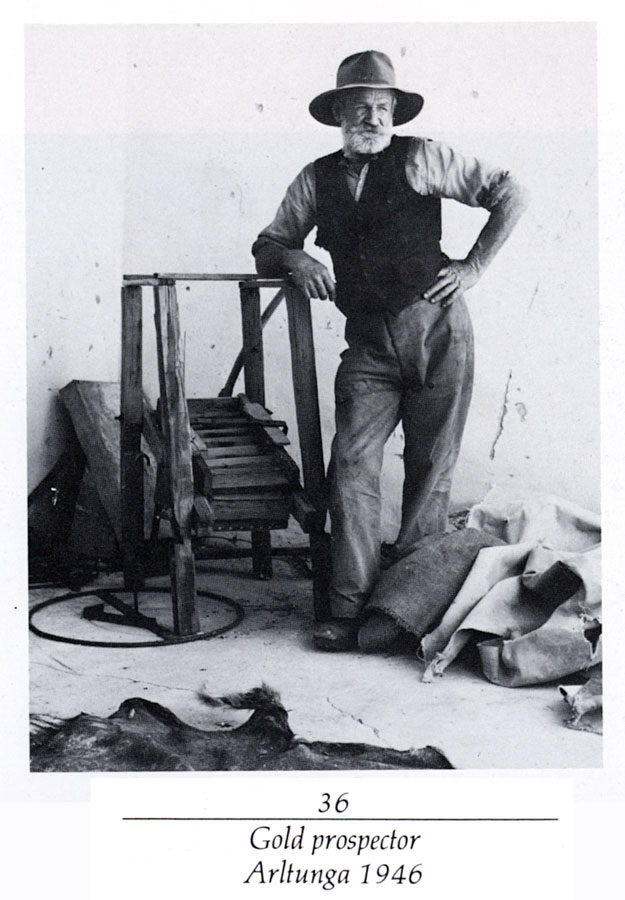
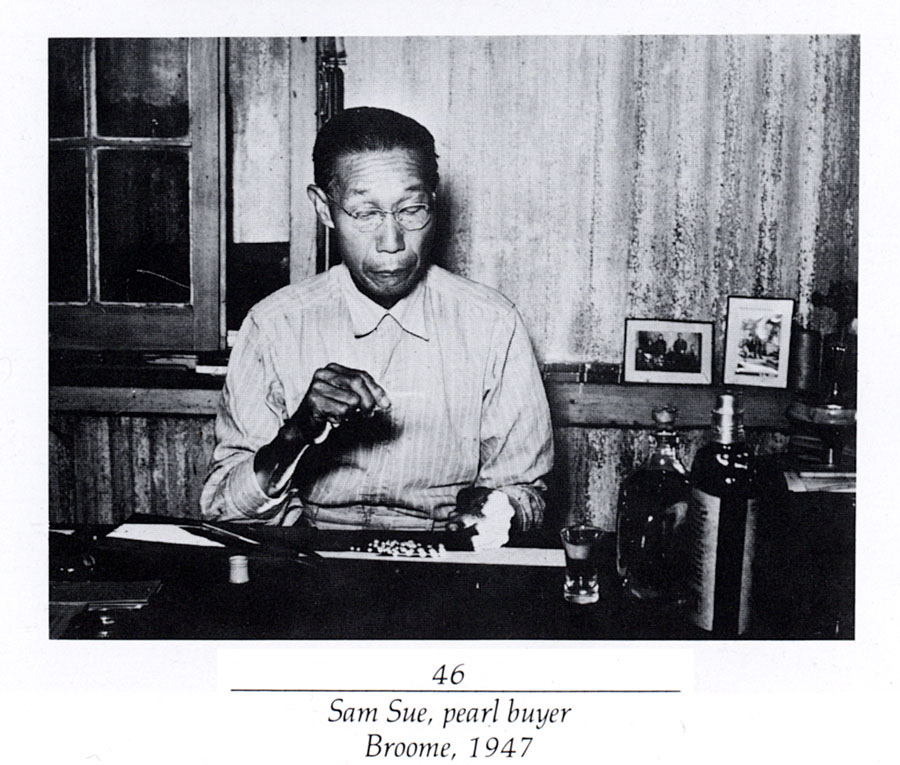
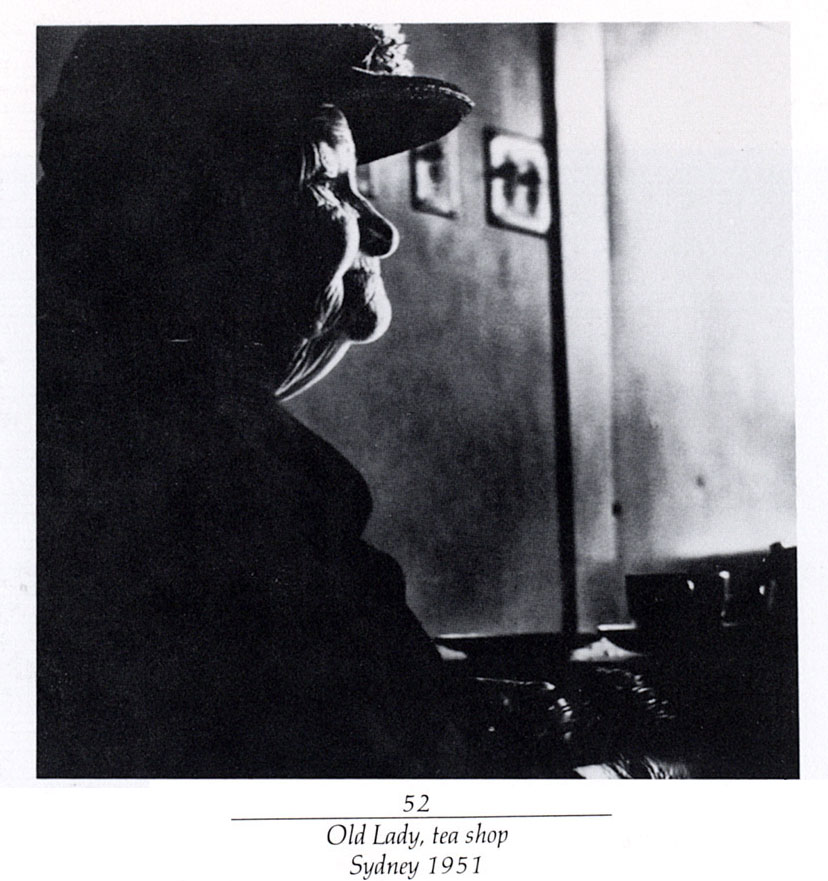
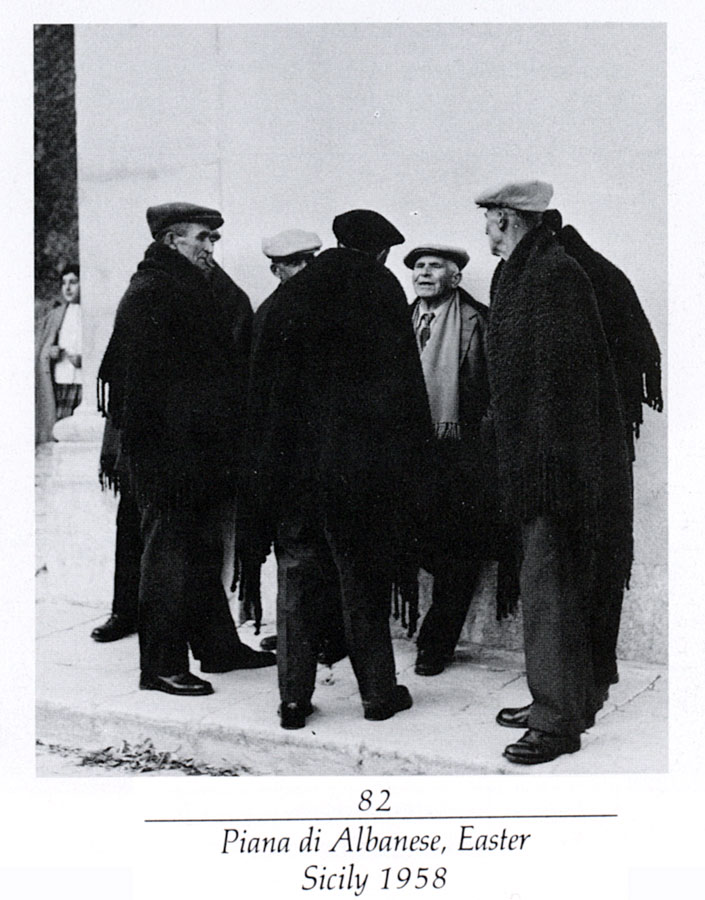
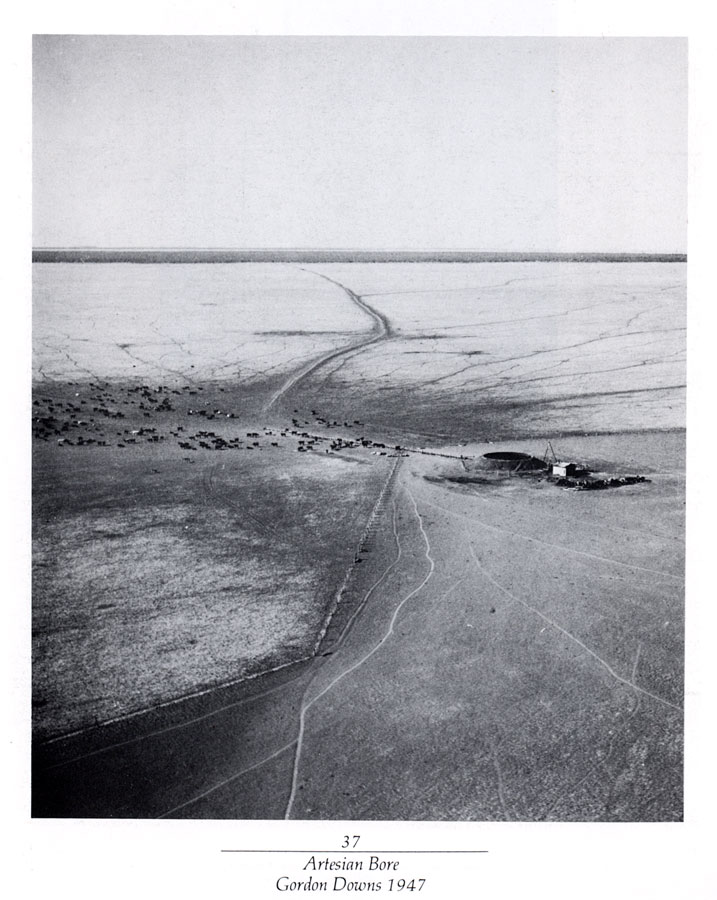
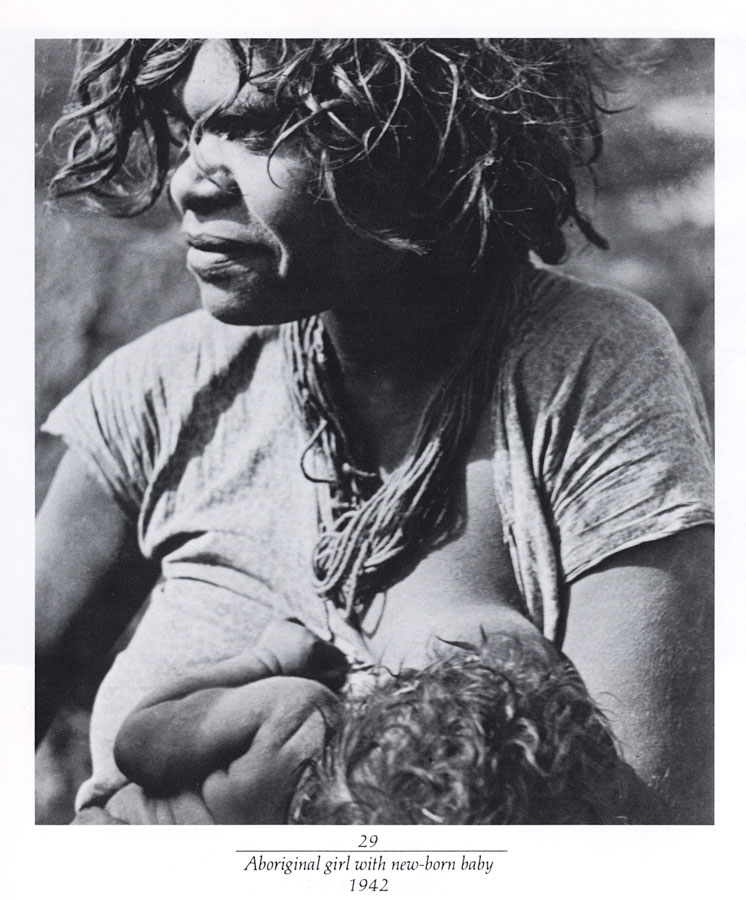
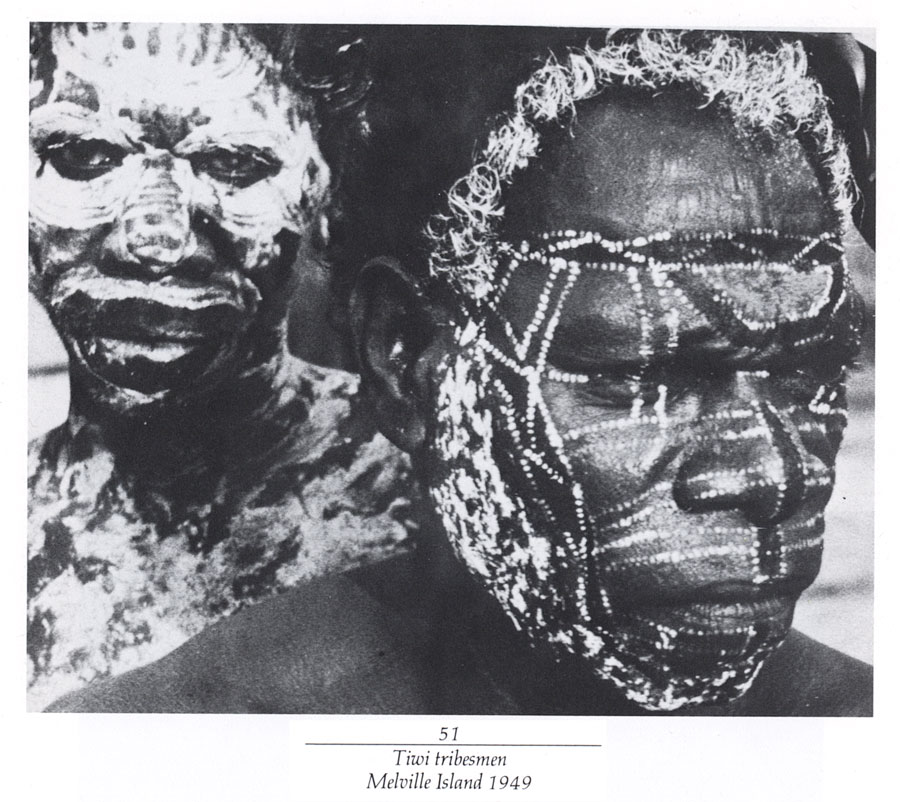
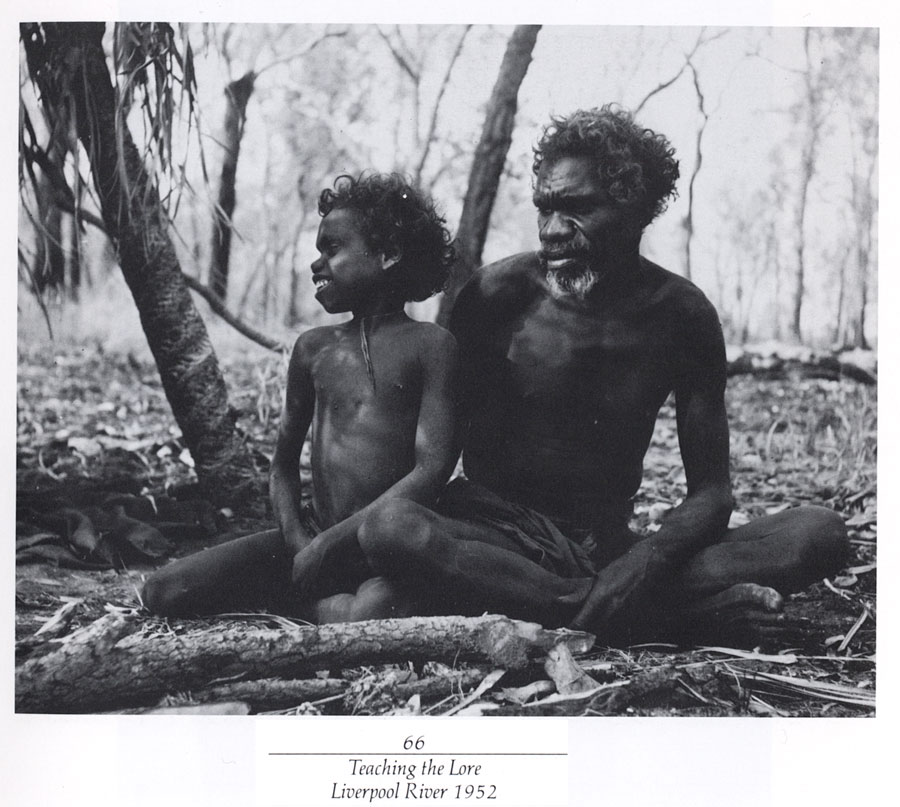
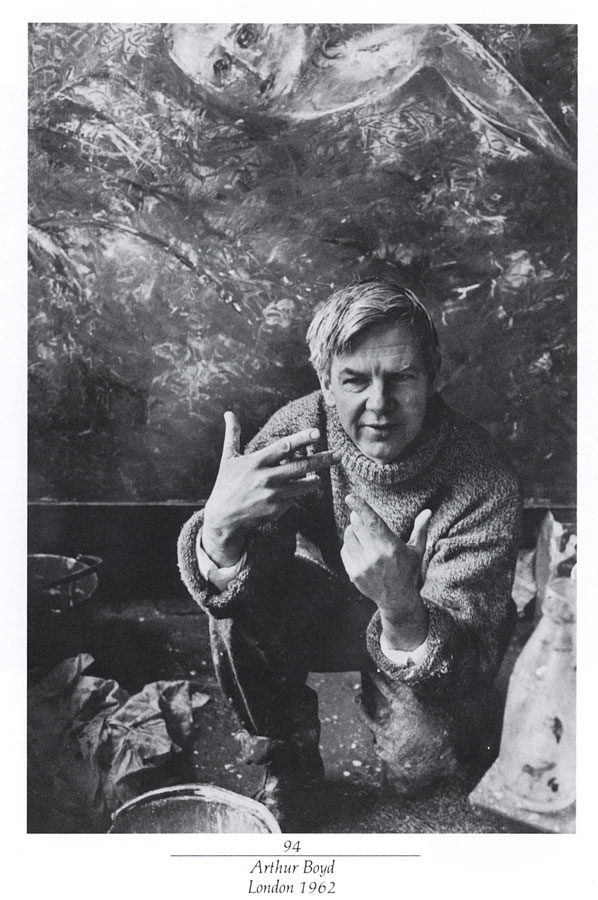
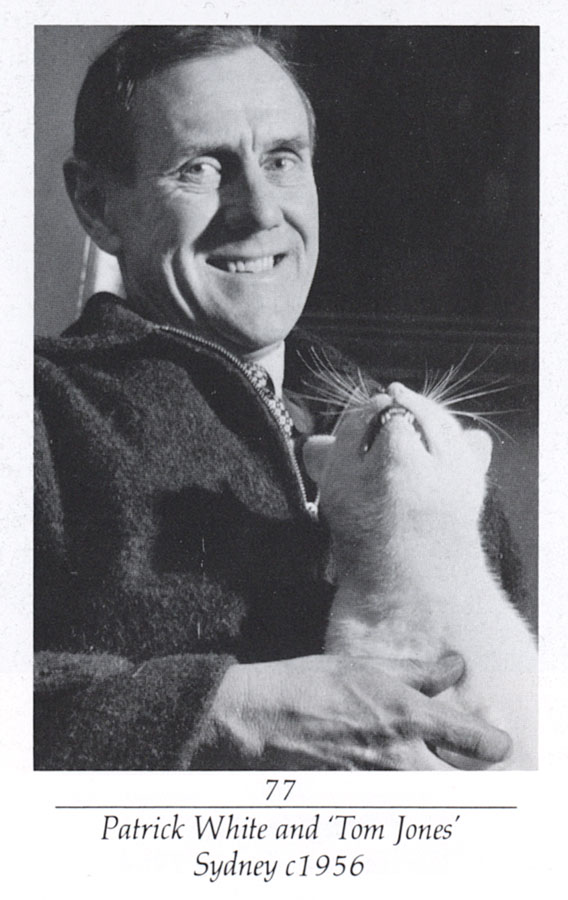
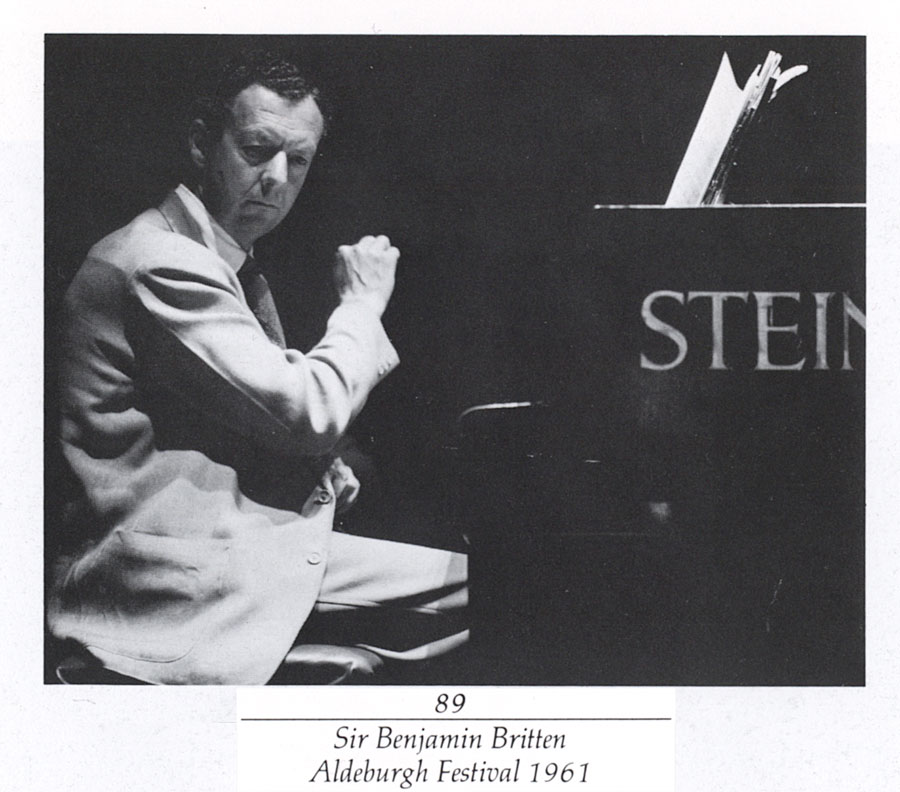
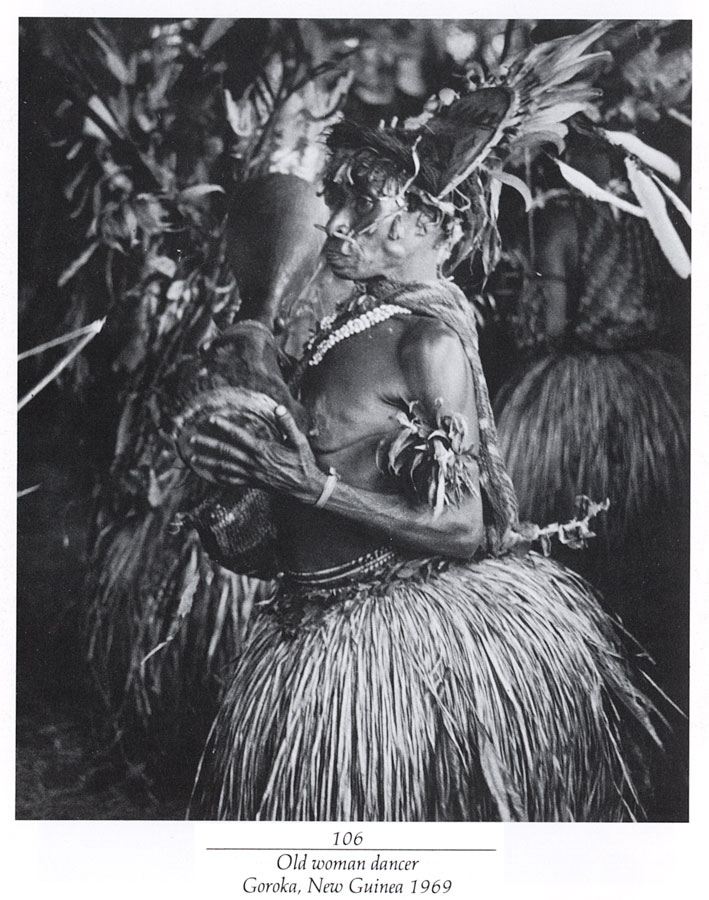
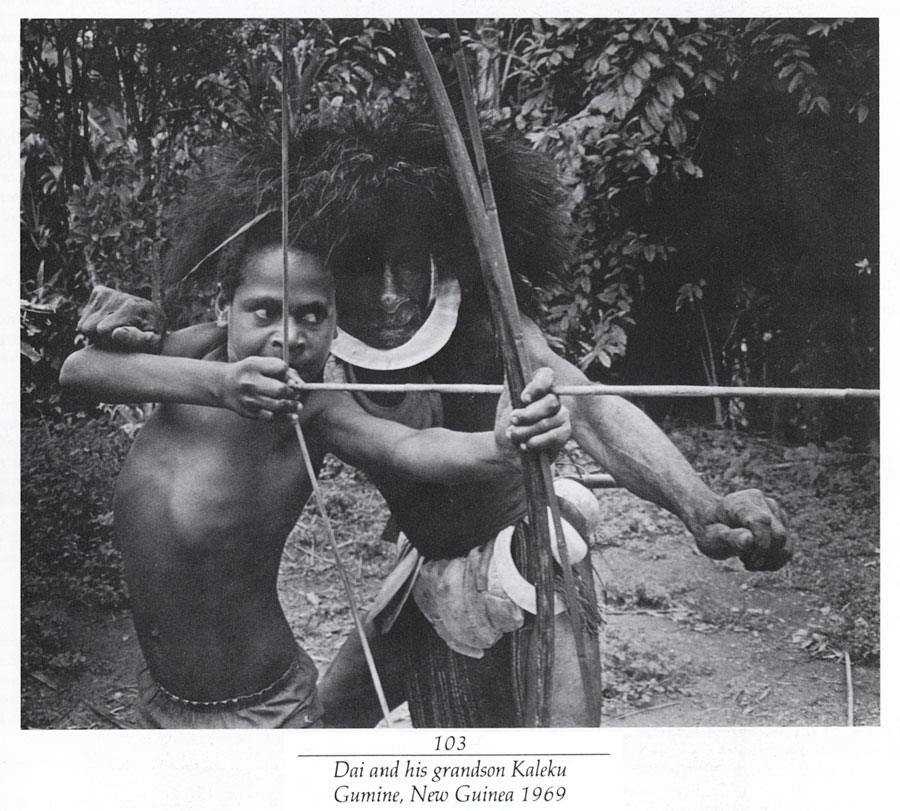
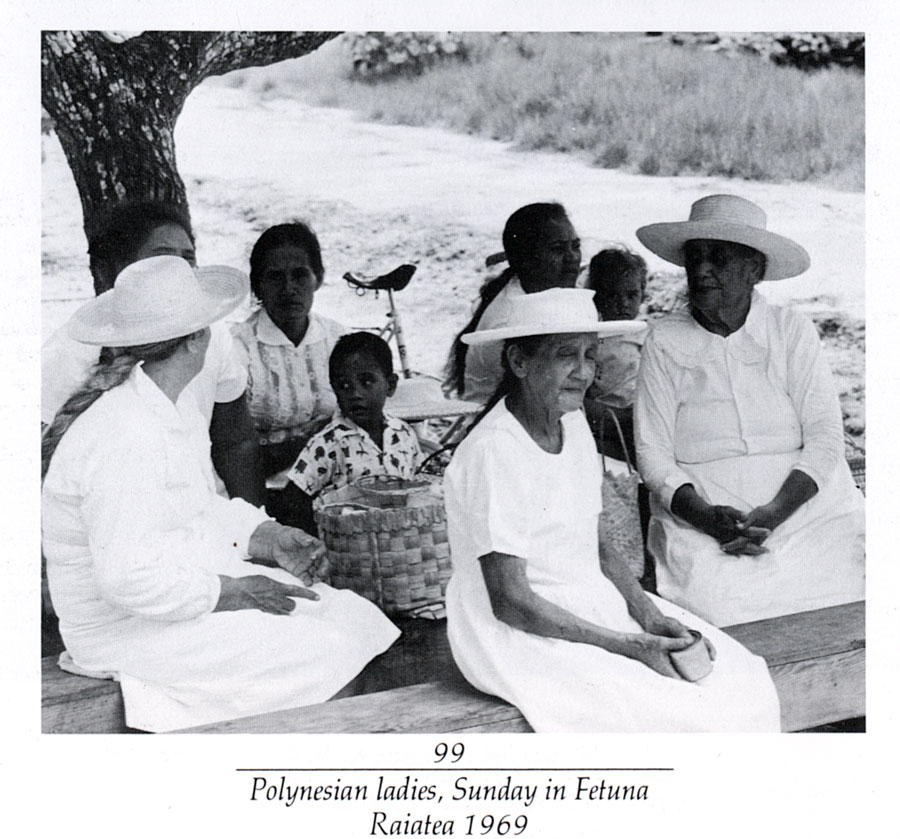
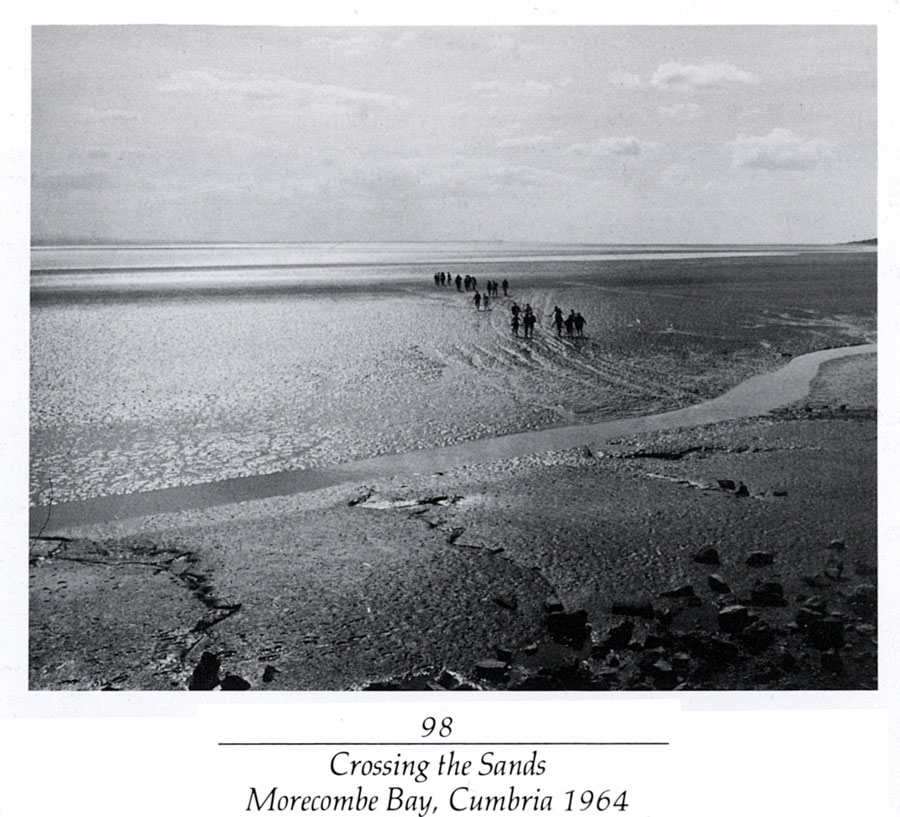
Checklist
Early Works: Sweden, England and Australia 1922-35
nos1-14 All printed on Agfa RR paper
| 1 |
Self-portrait, Sweden. 1922
selenium toned, print from copy negative, 13.1 x 10.2
A double exposure of Poignant, aged 16, in his sea cadet's uniform. His first photograph, taken with a borrowed camera. |
| 2 |
Faster Mi, Harrogate, England. 1926 (Swedish; father's sister, Maria)
selenium toned, 12.9 x 10.7 Piccolette camera A silhouette of subject, lit by magnesium ribbon. |
| 3 |
Farewell to the English aunts, London. 1926
sepia toned (sodium sulphide), 16.0 x 9.7 Piccolette camera, Captioned At the Station in negative album. |
| 4 |
Letter from home, Scheyville, New South Wales. 1926
sepia toned (sodium sulphide), 11.5 x 16.4 Piccolette camera, Captioned Receiving Mail at the Post Office, in an album of photographs of Poignant's journey to Australia on board the Pakeha and his first few months in New South Wales; assembled by him for his parents. |
| 5 |
Rukmini, Sydney, New South Wales. C1929
print from copy negative, 14.2 x 10.7 A plate Soho reflex camera,Rukmini Devi, (Mrs George Arundale), was prominent in the Indian dance revival of the 1920s-30s. |
| 6 |
Alison Lee, Perth, Western Australia. C1933
print from copy negative, 14.2 x 10.7 Vt plate Soho reflex camera, Lee was a teacher at Linley Wilson's ballet school. |
Logging, Karri Forest, Pemberton. Western Australia c 1934/5
nos 7-14 Selected from Poignant's first photoessay, which was a significant exploration of the use of the Leica camera, nos 7-12 are copy prints of the original postcard-prints, nos 7-11, 9.0 x 14.0 each
| 7 |
The axeman |
| 8 |
Topping |
| 9 |
Timber! |
| 10 |
Hauling the logs to the railhead |
| 11 |
Logs for the sawmill |
| 12 |
Sawing the log 13.5x10.0 |
| 13 |
Felled log 20.0 x 29.0 |
| 14 |
Working bullocks 20.0 x 28.5 Exhibited: Axel Poignant — Hal Missingham, 1941, # 3
Title taken from the novel of the same name by Katharine Susannah Prichard, (London, Cape Press, 1926). This print matches the size of the vintage print from the 1941 exhibition. |
| 15 |
Percy Grainger, Perth, Western Australia. 1935
vintage print of 1935, sepia toned, on cream mount, 10.4 x 14.3 Leica camera, Inscribed: I.e. mount in ink To Axel Poignant
in artistic sympathy from Percy Grainger May 28, 1935 and 1.1. mount in inkHillsong I with musical notation of the tune. |
Western Australia 1936-42
nos 16-29 Kalgoorlie 1936 nos 16-21 All printed on Agfa RR paper except no 21 Leica camera
16 |
Pouring gold 29.0x 37.0 Exhibited: Axel Poignant — Hal Missingham, 1941, # 22
with comment The value of this block of gold is approximately £5,500. The workman is protected from the heat by the asbestos garment and hood. Total value of gold produced in WA up to 1940 is £239,960,407. |
| 17 |
Gold fossicker's home 22.6 x 33.2 Exhibited: Axel Poignant — Hal Missingham, 1941, # 18 as Prospector's home with comment An old-age pensioner he lives in a cave on Maritana Hill, where he spends his time gold-specking. The 'hill' was a spoil dump left over from the mining operations. |
| 18 |
Abandoned gold mine 27.9x38.3 Exhibited: Axel Poignant — Hal Missingham, 1941, # 20 |
| 19 |
Storm over Kalgoorlie 25.1 x33.2 Exhibited: Axel Poignant — Hal Missingham, 1941, # 34 as Miners' homes, with comment In the heavy storm of 1936 two children were drowned in a subway (a subway is a storm-water channel) into which this drain empties. |
| 20 |
Miners' homes 23.0x33.2 |
| 21 |
Two-up school. Ilford velvet stipple paper, 28.1 x 42.4 Exhibited: Axel Poignant — Hal Missingham, 1941, # 32 with comment The only way 1 could take a photograph of this famous school without risk of being beaten up, was to charter a plane and dive down on it. The 'school' was for the illegal gambling game of 'Two-up'. |
| 22 |
Con Henry, Pingelly c l938. Agfa RR paper, 31.4 x 22.8 Leica camera Exhibited: Axel Poignant — Hal Missingham, 1941, # 10, as Old Age Pensioner, with comment Worked for the Midland Railway most of his life. Now lives on a farm. The pensioner recalled finding coins and relics from the wreck of the Batavia, while mining guano on the Abrolhos Islands in the 1890s. |
| 23 |
Jack and his family, part Aborigines, Pingelly. cl938 Agfa RR paper, 27.3 x 38.2 Leica camera,Exhibited: Axel Poignant — Hal Missingham, 1941, probably #11, Dinkum Aussies. |
| 24 |
Kangaroo paw, Perth. cl939 vintage print cl940, Agfa paper, negative lost, 38.5 x 28.0 Vi plate studio camera. Exhibited: Axel Poignant — Hal Missingham, 1941, # 40 |
| 25 |
Fledgling osprey on the nest, Abrolhos Islands. cl939 vintage print, cl940, (first shown in 1941 exhibition listed below), Agfa paper, 31.4x39.0 Leica camera, standard 50 mm lens. Exhibited: Axel Poignant — Hal Missingham, 1941, # 9 as Head of a Young Osprey, (different framing); Six Photographers, 1955, # 147 Published: V. Serventy'Abroholos (sic) Adventure' The Western Mail, 19/4/46, p 1 (oval framing); Australian Photography 1947, p 92 (different framing); The Improbable Kangaroo, 1965, pi 150 (different framing). |
Canning Stock Route Expedition, Ne Western Australia 1942
nos 26-29 Leica camera
| 26 |
On the Canning stock route Agfa RR paper, 33.1 x 41.0 |
| 27 |
Spinifex and flowers. Cibachrome print from 35 mm Kodachrome transparency, ASA 10, 19.0x24.3 |
| 28 |
Aboriginal stockman. Agfa RR paper, 34.5 x 28.0 Exhibited: Newcastle and Hunter Valley 150th Anniversary, September, 1947
First published: Australian Photography 7 947, as Head Stockman p 80 and front and back dust-jacket. |
| 29 |
Aboriginal girl with new-born baby. Ilford velvet stipple paper, 32.8 x 28.4 Art Gallery of New South Wales collection, (previously dated 1938). Exhibited: Newcastle and Hunter Valley 150th Anniversary September, 1947; Six Photographers, 1955, # 141, as Mary in both exhibitions; Australian Photography — a contemporary view, Australian Centre for Photography, Sydney 1979, Neikrug Gallery, New York, USA 1979 First published: Australian Photography 1947. p 31, (awarded the gold medal by book selection committee from entries for Hunter Valley exhibition 1947); Australian Photography — a contemporary view 1978, p 9; Silver & Grey, p 98. |
Northern Territory 1945-47
nos 30-39
| 30 |
The last police patrol by camel, departs Alice Springs. 1945 Ilford velvet stipple paper, 38.1 x 26.2 Leica camera |
| 31 |
Albert Namatjira and his wife Rubina, Macdonnell Ranges. 1946 Ilfobrom paper, print 1981 by Roger Scott, Sydney, from a negative courtesy of the Australian Information Service, Canberra, 44.8x34.7 Graflex camera Taken during the filming of Namatjira the Painter (1946), Film Division, Department of Information. The group were in camp during a walkabout by camel in the area. |
| 32 |
Aboriginal stockman, Central Australia. cl947,Cibachrome colour print 1981, from 35 mm transparency, 35.6 x 24.3. Leica camera |
| 33 |
Aboriginal stockmens'camp, Wave Hill Station, cl946 Kentmere document paper, 23.2 x 35.9 Vt plate adapted Sanderson camera Exhibited: Australian Photography — a contemporary view, Australian Centre for Photography, Sydney 1979; Neikrug Gallery, New York, USA 1979 Published: Australian Photography: a contemporary view, 1978, p 10 |
| 34 |
Saddler, Wave Hill Station. cl946 Ilford velvet stipple paper, 32.8 x 43.3 Vi plate adapted Sanderson camera Art Gallery of New South Wales collection |
| 35 |
The ration. Wave Hill Station. cl946 Ilford Galerie paper, 29.1 x 36.8 Vi plate adapted Sanderson camera Tea, flour and sugar were poured into the same bag and skilfully panned afterwards in a container to separate them. |
| 36 |
Gold prospector, Arltunga. 1946 Ilford velvet stipple paper, 35.7 x 26.8 Vi plate adapted Sanderson camera, Art Gallery of New South Wales collection. Exhibited: Australian Photography — a contemporary view, Australian Centre for Photography, Sydney 1979; Photographers' Gallery, London UK 1979; Neikrug Gallery, New York, USA 1979. Published: Australian Photography: a contemporary view, 1978, p 10 The gold had petered out but he lived in the abandoned mine office and kept his dry blower in the adjoining room without a roof, where this photograph was taken. Note the tobacco tin of gold dust in his vest pocket. |
| 37 |
Artesian bore, Gordon Downs. 1947 Ilford Galerie paper, 51.1 x 41.0 Japanese aerial camera. First published: Fortune Magazine, 1951, p 84 to illustrate an article by Gilbert Burck. Published many times since 1951. |
| 38 |
Breaking-in horses, Negri Station. 1947 Ilford Galerie paper, 32.4 x 37.0 Japanese aerial camera Taken just before the annual picnic races, which I covered for a story in AM, April 1950 |
| 39 |
Goanna in swamps east of Darwin. 1947 Kodak WFL paper, 34.9 x 51.4 Leica camera Exhibited: Six Photographers, 1955, # 148 Published: The Improbable Kangaroo, pi 169 |
Western Australia 1947
nos 40-46
| 40 |
Storekeeper, Hall's Creek. Ilford Galerie paper, 34.0 x 29.2 Vi plate adapted Sanderson camera |
| 41 |
'Paddy, King of Ord River'. Ilford Galerie paper, 38.4 x 26.3 Leica camera Art Gallery of New South Wales collection
Exhibited: Six Photographers, 1955, # 140 with comment similar to below: When this Aboriginal leader of his tribe was too old to work anymore, he was given regular rations and two outfits of clothes a year to hold him on the station — so that the rest of the workforce would also stay. His name was not Paddy, this plate had been worn by his predecessors. I had stopped overnight at the station and in the morning saw 'Paddy' by the kitchen door. We walked a short distance to a spot where I could see his country behind him and photographed him there in order to convey my feelings about the exploitation of the Aborigines. Unfortunately no-one wanted to know and to my recollection, this image was not published until the 1960s. Published: The Forgotten People, Australia's Heritage, 1972. p 23 & 42, Sydney, Paul Hamlyn. |
| 42 |
Baobob tree, Ord River crossing. Ilford Galerie paper, 33.0 x 42.4
Japanese aerial camera First published: This Land of Ours: Australia (ed) George Farwell and Frank H. Johnston, 1949; Sydney, Angus and Robertson; US Camera 1952, p 384, advertisement section (different framing). Today this site is probably submerged under Lake Kununurra as part of the Ord River diversion dam. |
| 43 |
Kimberley Ranges. Kodak WFL paper, 41.0 x 50.2 Japanese aerial camera |
| 44 |
Chinese quarter, Broome. Kodak background paper, 18.4 x 41.0 Va plate adapted Sanderson camera |
| 45 |
Pearl divers' equipment store, Broome. Ilford velvet stipple paper, 31.7 x 25.3 Va plate adapted Sanderson camera Art Gallery of New South Wales collection. Exhibited: Australian Photography — a contemporary view, Australian Centre for Photography, Sydney 1979; Neikrug Gallery, New York, USA, 1979. Published: Australian Photography: a contemporary view, 1978, p 10 Taken at the start of the first full season after the war. |
| 46 |
Sam Sue, pearl buyer, Broome. Ilford Galerie paper, 30.2 x 40.9 'A plate adapted Sanderson camera Art Gallery of New South Wales collection Published: Silver and Grey, 1980, pi 99 Sam Sue was a famed pearl buyer in Broome. The characters and adventures of these buyers are recorded in the Ion Idriess story Forty Fathoms Deep (1937), Sydney, Angus & Robertson. The pearling industry was reviving after the war. During hostilities everybody had been evacuated from Broome and most of the pearling luggers and boats had been burnt in the 'scorched earth' policy after the Japanese bombing. |
| 47 |
Wheat fields, South Australia. 1947 Ilford Galerie paper, 51.3 x 41.3 Japanese aerial camera Photographed just after take-off from Adelaide airport, looking towards the lake. |
| 48 |
Kangaroo, Sir Colin McKenzie Sanctuary. Victoria. 1947 Ilford Galerie paper, 28.1 x 21.7 Rolleiflex camera Exhibited: Six Photographers, 1955, # 151; Internationell fotoexpo i Karlstad, Sweden, 1957 Published: AM (Australia Monthly), March 1952, p 35; L/.S. Camera Annual 1952, p 194; The Improbable Kangaroo, 1965, pill |
| 49 |
Darter, preening its feathers. Victoria. cl947 Ilford Galerie paper, 40.9 x 30.4 Leica camera Exhibited: Six Photographers. 1955, # 154 First published: Bush Animals of Australia, 1948, p 129; The Improbable Kangaroo, 1965,pi 148; Australian Photography 1957, pi 34as Snake Bird |
| 50 |
Cockatoo totem man, taking part in a Pukamuni (mortuary) ceremony, Melville Island. 1949 Ilford Galerie paper, 41.5 x 30.3 Leica camera Exhibited: Six Photographers, 1955, # 135 Published: AM (Australian Monthly), July 1949, p 46; Colin Simpson, Adam in Ochre,1951, opposite p 74; R. Poignant, Oceanic Mythology, 1967, p 118 |
| 51 |
Tiwi tribesmen, painted for a Pukamuni (mortuary) ceremony, Melville Island. 1949 Ilford Galerie paper, 30.0 x 38.7 Leica camera Published: Colin Simpson, Adam in Ochre, 1951 (figure on right only) opposite p 158 The men were painted in preparation for a Pukamuni (mortuary) ceremony. |
| 52 |
Old Lady, tea shop, Sydney. 1951 Ilford Galerie paper, 28.0 x 28.6 From first roll on new Rolleiflex camera Exhibited: Six Photographers, 1955, # 144, as Old Lady First published: AM (Australia Monthly) April, 1952, p 47 (reversed) Taken during a power blackout, the shop was near Hyde Park. |
| 53 |
Collecting supplies, near Mangrove Creek, Hawkesbury River. New South Wales. 1951 Ilford Galerie paper, 25.6 x 28.1 Rolleiflex camera. I travelled on the postman's launch for a story on the Hawkesbury River. The postman had lived in the area all his life. His father and grandfather had also been river men. He also carried supplies from the store. |
| 54 |
Ladies, near Mangrove Creek, Hawkesbury River, New South Wales. 1951 Ilford Galerie paper, 23.7 x 28.0 Rolleiflex camera. Passengers on the postman's launch. They used a cornflakes packet nailed to a stick to flag down the launch. |
Arnhem Land, Northern Territory 1952
nos 55-71 Liverpool River nos 55-67 Ilford Galerie paper except nos 62, 66, 67; Rolleiflex camera except nos 56, 61, 62, 71
| 55 |
Spearfisherman 41.2x48.0 Published: F D McCarthy, Australia's Aborigines, 1957, p 13 (as colour gravure) Winugoidj, brother of Lamilami, my guide on this expedition. |
| 56 |
Shellfish gathering, low tide. 29.6x33.4 Leica camera |
| 57 |
Ready for the hunt 34.3x22.7 Narrana |
| 58 |
A rest during the hunt. 30.3 x 40.2 Art Gallery of New South Wales collection (as Narrana and sons)
Exhibited: Six Photographers, 1955, # 132 Published: R & A Poignant, The Dancing Boy, Puffin Annual no 2,1975, p 62; Silver and Grey, 1980 pi 97 as Narrana and sons. While out hunting with this family they stood in the only shade while I changed the film in my camera. Narrana's wife Moru-rur is in the background with the food they have gathered. Narrana was a Gungorogone man from the Tomkinson River area. His sons names were Mipornun and Gamelameri. They joined my camp at Liverpool River. |
| 59 |
Food gathering. 33.0x22. 1st Published: F D McCarthy, Australia's Aborigines, 1957, p 42b Moru-rur, Narrana's wife |
| 60 |
Father and sons 37.0x30.5 Narrana, Mipornun and Gamelameri |
| 61 |
Threatened fight. Liverpool River. 4 images 13.4 x 19.2 each, 1 image 25.0 x 19.2, 1 image 25.6 x 20.2 Leica camera
Published: R & A Poignant, The Dancing Boy, London, Puffin Annual no 2,1975, p 64; The Ecologist, 1976 The two men fell into an argument when the son of one threw a scallop shell which struck the elder man's baby granddaughter. Things became more serious when they took up their spears and threatened each other. Immediately the relatives gathered round. Nobody wanted a fight. From time to time they intervened and tried to separate the men, but mostly stood with their eyes averted, listening. After about an hour the antagonists had worked off their anger, and returned to their separate camps. The next day they showed no resentment to each other. They took no notice of my flash except to say: 'If the Balanda (white man) wasn't here I'd run this spear through you'. |
| 62 |
Early morning, the camp, 1 & II . I Ilford Galerie 30.2 x 34.2 Mangordja's (Manguddja's) camp at Aralawui Djarari
II Cibachrome colour print from 35 mm transparency, 35.6 x 24.3 Leica camera Narrana's camp at Aralawui Djarari |
| 63 |
Leading the dance. 25.0x41.0 London 1963. Narrana |
| 64 |
In the bush. 36.5x29.7 Ringidj and children by the seashore |
| 65 |
Mother and child. 41.3x29.0 Exhibited: Six Photographers, 1955, # 139, with comment The first time the child has seen a white person. This was the only one of the six photographers works to be purchased from the exhibition. Published: Photography Year Book, London, 1960; Rex and Thea Rienits, A Pictorial History of Australia, 1969, London, Paul Hamlyn, p 25 (cropped) Mamering, the daughter of Manguddja and her child |
| 66 |
Teaching the Lore. Ilford velvet stipple paper, 31.2 x 42.2 Art Gallery of New South Wales collection.
Exhibited: Six Photographers, 1955, # 131 as father and son; Man, his planet, and space, , Expo 67 Canada, as Man and Boy Published: F D McCarthy Australia's Aborigines, 1957, p 32; Photography Year Book, London 1956, p 33. Anababurra (Njang-na-burra) a Blyth River man (Nagara man), a songman and celebrated leader of ceremonies, especially the murrain (a complex of sacred ceremonies). The older men of the tribes are the custodians of the songs and rituals and are the teachers of the Lore. With a group of his people Anababurra joined our camp at Liverpool River and played a leading part in the ceremonies which took place there. The boy is one of Narrana's sons. |
| 67 |
The songman. Ilford velvet stipple paper, 32.8 x 28.2 Art Gallery of New South Wales collection. Exhibited: Six Photographers, 1955, # 134; Australian Photography — a contemporary view, Australian Centre for Photography, Sydney 1979 Published: F D McCarthy, Australia's Aborigines, 1957, p 127A; Australian Photography: a contemporary view, p 11; R. Poignant, Oceanic Mythology, 1967, p 112 Mangordja (Manguddja) singing his marrain song in the general camp the night before a secret and sacred ceremony. This warns the women to keep well away from the men's ceremonial ground the next day. I was camped with the group for a period of time, and was able to set up a primitive flash arrangement on a pole. It was accepted that I set it off occasionally during the singing and other camp activities at night. |
Milingimbi 1952
nos 68-70 Rolleiflex camera
| 68 |
Milingimbi. Ilford Galerie paper, 39.4 x 29.2 Published: Bush Walkabout, 1972, pi 25 (latest edition of Piccaninny Walkabout, (1957) p 16); Unesco Courier, May 1957, back cover; A. Poignant, 'The Aborigines' Place in Modern Australia,' The Geographical Magazine, Nov. 1958, p 352 (different framing) |
| 69 |
Preparation for circumcision. Kodak WFL paper, 42.0 x 42.2 Art Gallery of New South Wales collection Decorated with gifts of yarn and feathers, and rubbed with ochre, to the accompaniment of the didjeridu, singing and clapping sticks, this boy was being ceremonially prepared for circumcision. This was part of the Marntliella cycle. |
| 70 |
Dingo woman Ilford Galerie paper, 29.7 x 38.2 Exhibited: Six Photographers, 1955, # 136 First published: F D McCarthy, Australia's
Aborigines, 1957, p 139 While the initiates are being decorated and sung over, the Dingo woman circled the group in an attempt to frighten the boys away from the men and back to the women. |
| 71 |
Circumcision ceremony, Elcho Island. 1952 Ilford velvet stipple paper, 35.0 x 26.6 Leica camera The initiate rests on his sponsor's body for the operation, his arms firmly held. He bites on his spirit bag to gain courage. |
New South Wales and Victoria 1953-6
nos 72-77
| 72 |
Giant fig tree and sugar cane farmers, near Lismore, New South Wales. 1953 Ilford Galerie paper, 41.2 x 29.8 Linhof 5" x 4" camera This giant tree stood in the one small patch of forest left after the surrounding land had been cleared for sugar cane. |
| 73 |
Ring-barked forest, Mount Warning. New South Wales. 1953 Kodak WFL paper, 38.6 x 30.9 Art Gallery of New South Wales collection. Exhibited: Six Photographers, 1955, # 146 as Destruction; Internationell fotoexpo i Karlstad, Sweden, 1957 First published: 'Literary Australia no 3: Steele Rudd', Sydney Morning Herald, 7/5/55, pll Mount Warning was named by Captain Cook, who could see it clearly as he sailed up the coast. On this occasion the strangely lit cloud above the mountain seemed to signal the danger of the ring-barked forest below. For a few years the land is good for grazing, but the dead trees sour the soil and erosion begins. |
| 74 |
Swagman on the road to Wilcannia. New South Wales. 1953/4 Ilford velvet stipple paper, 38.6 x 30.4 Rolleiflex camera
Art Gallery of New South Wales collection Exhibited: Six Photographers, 1955, # 145; Internationell fotoexpo i Karlstad, Sweden, 1957; Australian Photography: a contemporary view, Australian Centre for Photography, Sydney, 1979; Photographers' Gallery, London 1979; Three Years On: A Selection of Acquisitions 1978-81, Art Gallery of New South Wales, Sydney, 1981, illus p 80 First published: 'Literary Australia no 1. Banjo Patterson', Sydney Morning Herald, 23/4/55, p 16; The Observer, London, November 22,1959, p 2; W F Mandle, Going it Alone, 1978, Sydney, Allen Lane, (cover); Silver and Grey, 1980, pi 96 (dated 1953); Australian Photography: a contemporary view, 1978, p 11 (cropped) The bike had no chain or pedals. He used it to carry his worldly goods — tent fly, pots and pans, tucker and water and also some books. He gave his name as George Meredith and he was making his way from Paroo to Menindie which he expected to reach months later. He didn't go to 'The Hill' (Broken Hill) anymore. It was too far. We met up with him just past the Springfield Tank (tanks put down by the government to provide water supply along the road). |
| 75 |
Cuscus, Taronga Park, Sydney. cl954 Ilford Galerie paper, 28.7 x 21.7 Rolleiflex camera Rolleiflex Company Collection Exhibited: Six Photographers, 1955, # 152 Published: Australian Photography 1957, pi 12; A Poignant 'Mainly for Children: Australian Animals I have met',Sunday Times, October, 18,1958, p 85; The Improbable Kangaroo, 1965, pi 46 |
| 76 |
Young emus, Healesville, Victoria. 1956 Ilford Galerie paper, 32.6 x 30.2 Rolleiflex camera First published: Photography Magazine, January 1960; The Improbable Kangaroo, 1955, pi 109 |
| 77 |
Patrick White and 'Tom Jones', Sydney. C1956 Ilford Galerie paper, 31.5 x 20.5 Rolleiflex camera |
Sicily 1957-8
nos 78-83
| 78 |
Calascibetta from Enna. 1957. Kodak WFL paper, 40.5 x 48.2 Rolleiflex camera Taken ten minutes after sunrise September 14th. |
| 79 |
Cattle market, Enna. 1957 Ilford Galerie paper, 26.3 x 43.0 Exacta camera |
| 80 |
Piazza, Armerina. 1957. Ilford Galerie paper, 30.5 x 37.7 Rolleiflex camera Published: BBC 1963 |
| 81 |
Gleaners, almond orchard. 1958 Ilford Galerie paper, 28.4 x 43.5 Exacta camera |
| 82 |
Piana di Albanese, Easter. 1958 Ilford Galerie paper, 39.3 x 30.0 Rolleiflex camera |
| 83 |
Funeral, Santa Stefano di Camastra. 1958 Ilford Galerie paper, 28.4 x 43.6 Rolleiflex camera Published: Man Myth and Magic, Issue 13, p376 |
| 84 |
Baltic Sea, Sweden. 1962 Cibachrome colour print from 35 mm transparency, 32.6 x 48.0 Topcon camera |
England 1960-64
nos 85-98 All printed on Ilford Galerie paper
| 85 |
Radio telescope, Jodrell Bank, England. 1960 28.3 x 35.3 Mamiyaflex camera First published: H J Deverson journey Into Night, London, 1966, Frewin Ltd. |
| 86 |
Oxford Street, London. cl960 28.6x31.7 Hasselblad S W camera |
| 87 |
Louis Kentner and Gaspar Cassado, Bath Festival rehearsal. 1961 39.9x31.2 Rolleiflex camera |
| 88 |
Yehudi Menuhin rehearsing for the Bath Festival. 1961 29.4 x 26.4 Rolleiflex camera First published: Daily Express, May, 1961; Paris Match, May, 1961; Photography Yearbook, 1961 |
| 89 |
Sir Benjamin Britten, Aldeburgh Festival. 1961 28.4x34.3 Mamiyaflex camera One of a series used by the BBC |
| 90 |
Home for the Deaf, Bath. 1961 37.0x27.4 Mamiyaflex camera One of a series for the Royal National Institute for the Deaf for publication and exhibition purposes eg. ITV Appeal for the Deaf, February, 1963 |
| 91 |
A deaf child hearing for the first time, London. 1961 35.8x27.4 Topcon camera First published: The Observer, 1961, Nov. 12, p 34; Photography Yearbook, 1962; 'The Silent World' Royal National Institute for the Deaf journal, March, 1963 |
| 92 |
Rite of Spring ballet, Covent Garden, London.1962 20.1 x30.5 Topcon camera This movement in the ballet mirrors the form of the ground pattern of the Great Snake made by Milingimbi Aborigines in their ceremonies. My photographs of Arnhem Land Aborigines were consulted by the choreographer erf this production, Sir Kenneth Macmillan, and Sir Sidney Nolan, the designer. |
| 93 |
Monica Mason as the chosen maiden in the Rite of Spring ballet, Covent Garden, London.1962 44.4x30.4 Topcon camera |
| 94 |
Arthur Boyd, London. 1962 47.0x32.4 Topcon camera First published: Arthur Boyd retrospective exhibition catalogue, Whitechapel Gallery, London, 1962 |
| 95 |
Sir John Barbirolli, London. 1963 36.5x28.0 Mamiyaflex camera Part of a story for EMI Ltd |
| 96 |
Margot Fonteyn and Rudolf Nureyev rehearsing, Covent Garden, London. 1964 16.9x35.5 Topcon camera |
| 97 |
Sidney Nolan, London. 1964 31.5x21.0 Topcon camera 1st Published: Studio International, November, 1964 The painting in the background is for the cover of Patrick White's novel The Aunt's Ston/ (Penguin edition). |
| 98 |
Crossing the sands, Morecombe Bay, Cumbria. 1964 28.9x40.7 Topcon camera First published: The Geographical Magazine. November. 1964; Saturday Page, The Times, May 1965 These guided walks take place several times a year, following an old coach route. There has been an official guide, appointed by the Duchy of Lancaster, since the 12th century. |
Pacific 1969
nos 99-107 Ilford Galerie paper except colour works
nos 104 & 107 Pentax camera
| 99 |
Polynesian ladies. Sunday in Fetuna, Raiatea. 29.0x38.1 |
| 100 |
The taro patch, Fetuna, Raiatea. 21.3 X32.7 |
| 101 |
Warriors, Western Highlands, New Guinea. 34.7x44.0 |
| 102 |
Going to market, Gumine, Central Highlands, New Guinea. 41.8x28.3 |
| 103 |
Dai and his grandson Kaleku, Gumine, Central Highlands, New Guinea. 28.6 x 40.6 First published p 26: Kaleku, 1972 |
| 104 |
Singsing at Gumine, Central Highlands, New Guinea. Cibachrome colour print from 35 mm transparency, 36.4 x 29.8 Published: Man Myth ami Magic, Issue 64, p1797 |
| 105 |
Asaro mudmen, Eastern Highlands, New Guinea. 44.5 x35.0 |
| 106 |
Old woman dancer, Goroka, Eastern Highlands. New Guinea. 35.2 x28.2 |
| 107 |
Cone of Kilauea Iki crater, Hawaii. Cibachrome colour print from 35 mm transparency, 33.8 x 27.7 |
| 108 |
Anthurium, Cairns, Australia. 1975 Cibachrome colour print from 35 mm transparency, 38.2 x 27.2 Nikon camera |
| 109 |
Black swans, The Coorong, South Australia, 1975 Cibachrome colour print from 35 mm transparency, 48.2 x 36.2 Nikon Camera |
London Garden 1977-79
nos 110-112 Cibachrome colour prints from 35 mm transparencies Nikon camera
| 110 |
Ladybirds, 1977. Taken with 500 mm lens, 24.2 x 29.2 First published: Australian Photography: a contemporary view, 1978, p 12 Exhibited: Australian Photography: a contemporary view, Australian Centre for Photography, Sydney 1979 |
| 111 |
Pond plant. 1977 24.2x16.7 |
| 112 |
Caterpillar. 1979 26.0x38.0 |
| 113 |
Gorge, Glen Helen. Macdonnell Ranges, Central Australia. 1980 Cibachrome colour print from 35 mm transparency, 24.3 x 35.6 Nikon camera |
Exhibition Dates
The Art Gallery of New South Wales, Sydney 17th July - 29th August, 1982
The Art Gallery of Western Australia, Perth 20th September - 24th October, 1982
The National Library of Australia, Canberra 13th December, 1982 - 30th January, 1983
Exhibition organiser:
Gael Newton, AGNSW Curator of Photography
Use the menu below to open other sections
Exhibition Introductions / catalogue essay / biographical details
for more on Axel Poignant
more of Gael Newton's Essays and Articles
|

















